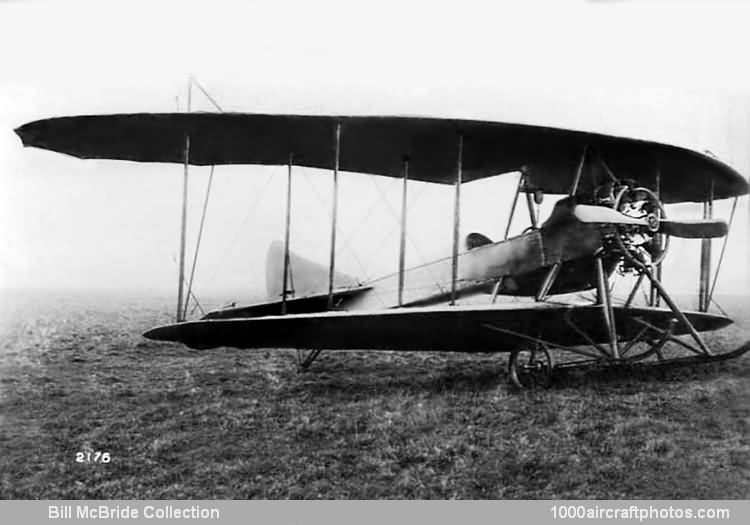The aircraft was officially tested at the Royal Aircraft Factory aerodrome at Farnborough on December 11, 1913, by staff pilot E.Ronald Whitehouse, and proved capable of carrying two passengers as well as the pilot – presumably in somewhat cramped conditions. Acquired in May, 1914, by W. Rowland Ding, the G/100 was used by him to make a journey which was perhaps the first taxi flight to the European Continent. The outward flight took place on May 21,1914, when Ding took off from Hendon with Princess Ludwig von Lowenstein-Wertheim as passenger, to fly her to Calais, from whence the Princess continued her journey to Paris by train. Ding flew back to Hendon the next day, making a refueling stop at Staplehurst, Kent.
At the outbreak of war in 1914 the G/100, in common with many other privately owned aeroplanes, was impressed into service by the Admiralty, and with the serial number 892 was used as a trainer, first at the RNAS station at Hendon and later at Chingford to where the aircraft from Hendon were moved in 1915. While with the Admiralty the rather flimsy twin wheel and skid landing gear was replaced by a more substantial V-braced arrangement without skids, the ventral fuselage fairing extended, and the rudder enlarged.
Because of the aircraft's inherent stability it was not a good machine on which pupils could learn the "feel" of an aeroplane's controls and it was crashed and written-off in August, 1915 by a pupil who relied rather too much on this stability. Prior to this crash the G/100 had been used for advanced instruction and also for observation patrols, on which the pilot was armed with a Webley revolver."
